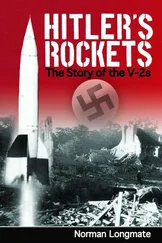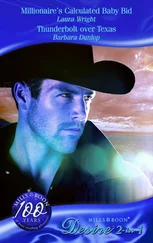Mike Mullane - Riding Rockets
Здесь есть возможность читать онлайн «Mike Mullane - Riding Rockets» весь текст электронной книги совершенно бесплатно (целиком полную версию без сокращений). В некоторых случаях можно слушать аудио, скачать через торрент в формате fb2 и присутствует краткое содержание. Жанр: Старинная литература, на английском языке. Описание произведения, (предисловие) а так же отзывы посетителей доступны на портале библиотеки ЛибКат.
- Название:Riding Rockets
- Автор:
- Жанр:
- Год:неизвестен
- ISBN:нет данных
- Рейтинг книги:3 / 5. Голосов: 2
-
Избранное:Добавить в избранное
- Отзывы:
-
Ваша оценка:
- 60
- 1
- 2
- 3
- 4
- 5
Riding Rockets: краткое содержание, описание и аннотация
Предлагаем к чтению аннотацию, описание, краткое содержание или предисловие (зависит от того, что написал сам автор книги «Riding Rockets»). Если вы не нашли необходимую информацию о книге — напишите в комментариях, мы постараемся отыскать её.
Riding Rockets — читать онлайн бесплатно полную книгу (весь текст) целиком
Ниже представлен текст книги, разбитый по страницам. Система сохранения места последней прочитанной страницы, позволяет с удобством читать онлайн бесплатно книгу «Riding Rockets», без необходимости каждый раз заново искать на чём Вы остановились. Поставьте закладку, и сможете в любой момент перейти на страницу, на которой закончили чтение.
Интервал:
Закладка:
On the ground NASA engineers were aware of the foam strike—KSC cameras had recorded the incident. But these same engineers had no idea what, if any, damage had occurred and since Columbia was flying without a robot arm, they could not direct the crew to remotely survey the site (as we had been able to do on STS-27). A handful of engineers requested their management to ask the Department of Defense to use its photographic sources to acquire images of the impact site. Had these photos or a crew spacewalk determined Columbia could not survive reentry, there was a reasonable chance Atlantis could have been hurriedly readied for launch on a rescue mission. The Columbia crew would have then donned spacesuits and transferred to Atlantis, and Columbia would have been abandoned in orbit. But key managers dismissed the photo request and never ordered a spacewalk. On February 1, 2003, Columbia would burn up on reentry, killing her seven-person crew.
I was in northern New Mexico at the time of the disaster, visiting my daughter and her family. Had I known of the reentry trajectory, I could have stepped outside and watched Columbia pass nearly overhead. But I was not an eyewitness. I received the news from TV: “The space shuttle Columbia is overdue for landing at the Kennedy Space Center.” Images of Columbia ’s fiery destruction soon followed. As I watched them I couldn’t help but visualize what the crew had experienced. I had no doubt their fortress cockpit had kept them alive during the out-of-control breakup of their machine. Just like the Challenger crew, they were trapped. Their backpack-parachute bailout system was useless at the extreme altitude and speed. And I couldn’t help but visualize the families. They would have been waiting at the KSC Shuttle Landing Facility, giddy in anticipation of having their loved ones safely on the ground and in their arms. They would have been chatting happily about the parties and postflight trips that were planned. Then an escort into widowhood would have come to their side to tell them the news. Their husbands and wife, fathers and mother would not be coming home.
I wasn’t affected by Columbia ’s loss as deeply as Challenger ’s. I had only a passing acquaintance with a few members of the crew. But I was still heartbroken. I stepped from my daughter’s house, walked into the adjacent desert hills, and began my prayers. Even as I was saying them, atoms of Columbia and her crew were quietly and invisibly settling to Earth around me.
The final report of the Columbia Accident Investigation Board (CAIB) would read remarkably like the Challenger report issued seventeen years earlier. In fact, in some key paragraphs of their document, the CAIB could have plagiarized the Roger’s Commission report nearly word for word. The only edits required would have been to substitute “External Tank” for “Solid Rocket Booster” and “foam-shedding” for “O-ring erosion.” Workplace cultural issues, including overwhelming pressure to keep shuttle launches on schedule, had, again, resulted in NASA mishandling repeated evidence of a deadly design flaw.
I have been too long removed from NASA to make any firsthand comment on those cultural issues or the leadership failures they suggest. Nor can I predict whether the agency will be able to fix itself…though I see reason for hope. The shuttle team’s meticulous response to the heat-shield damage sustained by Discovery on the first post- Columbia shuttle mission (STS-114) and the agency’s intention to keep the shuttle grounded until the maddeningly persistent ET foam-shedding problem is fixed suggests NASA has made safety its top priority. The question is, “Can this reinvigorated safety consciousness persist through the remaining life of the space shuttle program?” It didn’t last after Challenger, as Columbia ’s loss attests. Perhaps new NASA administrator, Dr. Michael Griffin, is a leader who can keep the agency focused on safety. I pray so. There have been enough families devastated in this business, not to mention the disastrous impact on America’s manned space program that another shuttle loss would precipitate.
In Senate testimony, Dr. Griffin has said he intends to retire the shuttle by 2010, arguing, “The shuttle is an inherently flawed system.” He’s right. It is an outrageously expensive vehicle and lacks a viable crew escape system. A well-led and adequately funded team might still have been able to safely operate even this “flawed system,” but the old NASA lacked both leadership and money.
Griffin continued, “We all know that human perfection is unattainable. Sooner or later there will be another shuttle accident. I want to retire it before that can occur.” His plan is to fly the shuttle a maximum of nineteen times—eighteen for ISS support and one for Hubble Space Telescope repair. My sympathies go out to the most junior astronauts who have been warned by NASA that they may never earn their gold pin on the shuttle because of the limited number of missions remaining. They are living what had been my greatest fear…that I would remain an astronaut in name only.
In all likelihood the craft that will replace the shuttle will be a capsule launched atop some type of booster rocket, possibly a reuseable shuttle SRB augmented with a liquid-fueled upper stage. It’s back to the future. The capsule will probably accommodate a four-person crew and be more sophisticated than those of the Apollo program, but with the same type of tractor escape rocket design to pull astronauts to safety in the event of a booster failure. Future astronauts will return to Earth under parachutes.
If all goes according to Griffin’s plan, on a day in late 2010, a reentering space shuttle will sonic-boom KSC for the last time. For the last time a pilot will take the stick of a winged spaceship and guide it to a runway landing. For the last time we will hear the call, “Houston, wheel stop.” The space shuttle will be history, retired at age thirty. I suspect every TFNG will be watching…and remembering. I certainly will.
Political correctness finally neutered the astronaut corps…or, perhaps, males from Planet AD have gone extinct. Several veteran NASA secretaries confided in me that contemporary astronaut parties are “boring.” I can believe it. When an astronaut applicant recently called me for insight into the interview process, I was shocked to hear her say that a resident astronaut had already warned her, “Drinking alcohol is frowned upon.” (No telling what the corps would say about imbibing in helium.) While I have never been one to believe alcohol is necessary to have fun, the comment hints that there is a new astronaut on the block, as good with a stick and throttle as any before but less flamboyant and more mainstream than the TFNGs. It doesn’t surprise me. The current civilian astronauts were born into an America that is politically correct in the extreme and the pilots now come from a military that is more sober and religious. So, besides the males from Planet AD, maybe the wild and wooly Right Stuff astronaut—that astronaut who lives life at the edge of the envelope, be it at happy hour or in a cockpit—has also gone the way of the dodo.
The last TFNG reunion occurred in 1998, our twentieth anniversary. Most of the men and all of the surviving women were present. The women seemed least changed, though I’m sure makeup and Clairol had a lot to do with that. The men, me included, were showing our age with expanding waistlines, receding hairlines, and liver-spotted foreheads. A few men sported new wives, though none of those seemed to be of the “trophy” variety. They were mature and pleasant. The rest of the wives were aging gracefully but their days of giving us men a “six nipples under glass” show were, sadly, gone.
Читать дальшеИнтервал:
Закладка:
Похожие книги на «Riding Rockets»
Представляем Вашему вниманию похожие книги на «Riding Rockets» списком для выбора. Мы отобрали схожую по названию и смыслу литературу в надежде предоставить читателям больше вариантов отыскать новые, интересные, ещё непрочитанные произведения.
Обсуждение, отзывы о книге «Riding Rockets» и просто собственные мнения читателей. Оставьте ваши комментарии, напишите, что Вы думаете о произведении, его смысле или главных героях. Укажите что конкретно понравилось, а что нет, и почему Вы так считаете.












